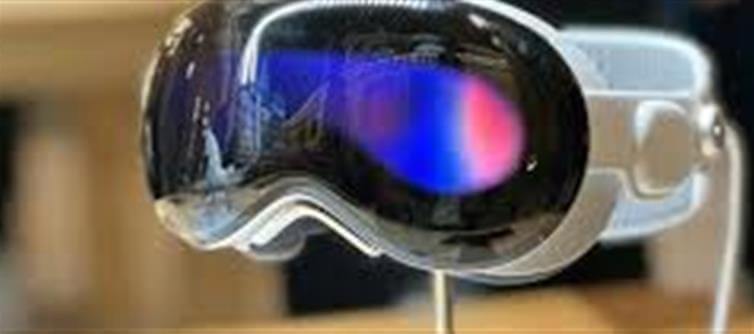
Apple is gearing up for a major evolution in spatial computing. With rumors of a refreshed Vision Pro, a lighter Vision Air, and even smart glasses, the tech giant seems set to dominate this futuristic segment. Here’s what to expect.
1. Vision Pro Refresh – Faster and Smarter
- The next Vision Pro will reportedly feature Apple’s upcoming M5 chip, replacing the current M2.
- Expect significant performance gains and improved efficiency.
- A more powerful neural engine could enhance AI-driven features like eye tracking and immersive app performance.
- Redesigned head straps may improve comfort and reduce neck strain.
2. A Mac-Connected Vision Pro in the Works
- Apple is exploring a Mac-dependent Vision Pro designed for professional industries.
- This version could deliver ultra-low latency for live-streaming Mac displays or running high-end enterprise apps.
- Likely target sectors include medicine, aviation, and design, where precision visuals are critical.
3. Vision air – Lightweight and Affordable
- The Vision Air is rumored to be a more accessible alternative to the Vision Pro.
- It may feature a slimmer build and lighter frame to reduce neck fatigue.
- Price cuts could open spatial computing to a wider audience, making it more mainstream.
- While some features may be scaled back, core AR/VR capabilities will likely stay intact.
4. Smart Glasses – Apple’s Next Big Leap?
- Lightweight smart glasses are reportedly in early development.
- Instead of full AR displays, these may feature microphones, cameras, and speakers for seamless wallet PLATFORM' target='_blank' title='digital-Latest Updates, Photos, Videos are a click away, CLICK NOW'>digital interaction.
- Expected launch: 2026, possibly rivaling Meta’s Ray-Ban smart eyewear.
5. Multi-Layered Strategy for Spatial Dominance
- Apple appears to be building a three-tier ecosystem:
Vision Pro for premium users and professionals.
Vision Air for casual and mid-range consumers.
Smart glasses for everyday wearable tech integration.
- Each product caters to a different segment, reinforcing Apple’s long-term dominance.
6. Comfort & Design Take Center Stage
- Weight reduction is a key focus across future devices.
- Improved ergonomics and lighter materials will likely define the next wave of Apple’s headsets.
- The goal: make spatial computing comfortable for all-day use.
7. Competition Heats Up
- Meta, Sony, and samsung are all working on advanced AR/VR gear.
- Apple’s blend of hardware, software, and ecosystem integration could give it the edge.
- The arrival of Vision air and smart glasses may push the company into mass-market adoption.
Final Take
From a performance-boosted Vision Pro to an affordable Vision Air and futuristic smart glasses, apple is setting the stage for the next decade of spatial computing. Whether for professionals, casual users, or everyday consumers, the tech giant is crafting an ecosystem designed to dominate.
.jpg)




 click and follow Indiaherald WhatsApp channel
click and follow Indiaherald WhatsApp channel